41 “Moonshiner’s Dance part 1” by Frank Cloutier & The Victoria Café Orchestra
10October 12, 2010 by gadaya
Many questions arise when we get to the last number of The Anthology’s “dance set”. Musically and geograpically, Frank Cloutier and The Victoria Café Orchestra are far removed from all the other tracks on the Anthology. While all the other Anthology artists comes from The South and their repertoire drawn mostly from Southern folk musical traditions, The Victoria Café Orchestra was a Saint-Paul Minnesota dance band who played old-fashioned popular music with a Polka/Novelty Jazz flavor. Why did Harry Smith chose this particular record to close his dance set? It sure gives a kind of epiphanical, exuberant final and “Moonshiner’s dance” has a great feeling of booziness and hilarity all the way through. But who were Frank Cloutier and The Victoria Café Orchestra anyway? From which world did they come from? When Smithsonian/Folkways reissued the Anthology at the end of the 1990’s, they had a lot to say and discuss about almost everyone, as The Folk Revival brought back many Anthology artists from the obscurity, but for Cloutier and his band, almsot nothing was known and in fact, didn’t seemed to raise a big interest among folklorists and musicians. But then came Kurt Gegenhuber…Kurt is the author of a great blog called “The Celestial Monochord” (subtitled:”Journal of the Institute for Astrophysics and the Hillbilly Blues”) whose favourite topics are the Folk  Revival, the world of The Anthology and this particular track by Frank Cloutier. In fact, Kurt started a few years ago to research everything he could gather about Cloutier and The Victoria Orchestra, and in the same time reflecting upon our distorted views of American Roots Music, a well-established canon which often ignore musical traditions brought by old world immigrants in the cities of the North and many other worlds of music found in the Northern parts of America. Kurt managed also to locate in St.Paul the old building who was once the home of The Victoria Café, the place where Frank Cloutier and his men were playing in the 1920’s. Since then he’s doing all that he can to preserve the building for destruction. (For more informations go to the “Save The Victoria theatre” page on Facebook)
Revival, the world of The Anthology and this particular track by Frank Cloutier. In fact, Kurt started a few years ago to research everything he could gather about Cloutier and The Victoria Orchestra, and in the same time reflecting upon our distorted views of American Roots Music, a well-established canon which often ignore musical traditions brought by old world immigrants in the cities of the North and many other worlds of music found in the Northern parts of America. Kurt managed also to locate in St.Paul the old building who was once the home of The Victoria Café, the place where Frank Cloutier and his men were playing in the 1920’s. Since then he’s doing all that he can to preserve the building for destruction. (For more informations go to the “Save The Victoria theatre” page on Facebook)
-So for more reading about “The Moonshiner’s Dance” and Frank Cloutier & His Victoria Café Orchestra, i urge you to go to “The Celestial Monochord” and check Kurt Gegenhuber’s fine articles.
-For now let’s do a survey of the tunes chosen by Frank Cloutier & The Victoria Orchestra for their “Moonshiner’s Dance”. It will help us a draw a kind of musical landscape of this particular time and place, a city in Minnesota at the end of the 1920’s.
The Moonshiner’s Dance Variations part 1
Listen to “The Moonshiner’s Dance part 1” (1927)
The Moonshiner’s Dance is a medley of old popular songs in a jazzy, polka style, punctuated by talks, laughts and the shouting “One, two, three, four” between each tune. In part 1 of the medley i tried to identify (with the help of Kurt Gegenhuber) the different tunes and came up with that:
1. (0:11) – When You and I Were Young, Maggie
2. (0:35) – How Dry I Am
3. (1:00) – [ harmonica – unknown ] (I vaguely recognized the B part of “Turkey in the straw”)
4. (1:25) – At the Cross
5. (1:50) -Jenny Lind Polka?
6. (2:06) – When You Wore A Tulip
-So, with the help of Wikipedia and the internet, let’s check out the history of the tunes:
“When You and I Were Young, Maggie”
When You and I Were Young, Maggie is a famous folk song, popular song and standard. Its lyrics were written as a poem by the Canadian school teacher George Washington Johnson. Margaret “Maggie” Clark was his pupil. They fell in love and during a period of illness, George walked to a nearby hill, overlooking a mill, and composed the poem. The general tone is perhaps one of melancholy and consolation over lost youth rather than mere sentimentality or a fear of aging. It was published in 1864 in a collection of his poems entitled Maple Leaves. They were married in 1864 but Maggie’s health deteriorated and she died on May 12, 1865. James Butterfield set the poem to music and it became popular all over the world. George Washington Johnson died in 1917.
by the Canadian school teacher George Washington Johnson. Margaret “Maggie” Clark was his pupil. They fell in love and during a period of illness, George walked to a nearby hill, overlooking a mill, and composed the poem. The general tone is perhaps one of melancholy and consolation over lost youth rather than mere sentimentality or a fear of aging. It was published in 1864 in a collection of his poems entitled Maple Leaves. They were married in 1864 but Maggie’s health deteriorated and she died on May 12, 1865. James Butterfield set the poem to music and it became popular all over the world. George Washington Johnson died in 1917.
The song was first recorded by Corinne Morgan and Frank C. Stanley in 1905 and has been recorded since by many famous artists including opera tenors John McCormack, Jan Peerceand Enrico Caruso, early country singer Fiddlin’ John Carson, bluegrass musicians Stanley Brothers, Reno and Smiley, Mac Wiseman, David Grisman and James Alan Shelton,crooners Perry Como and Gene Autry and popular singers such as Henry Burr. Instrumental recordings of Butterfield’s melody are also numerous, and date as far back as the 1930s. Notable recordings include those of jazzmen Benny Goodman, Fats Waller, Teddy Wilson and Sidney Bechet and ragtime pianist Johnny Maddox. The song is also considered as a standard of dixieland. In 1983 Irish duo Foster & Allen reached number 27 in the UK singles chart with their version. This led many people to think it was an Irish song. It was also recorded by De Dannan on the album “Star-Spangled Molly”, and by James Galway and The Chieftains on “In Ireland”. The Statler Brothers also recorded their harmonious rendition.
-Listen to a few recordings:
John McCormack (Irish tenor singer, 1925)
Fiddlin’ John Carson (Early old-time fiddler and hillbilly star, 1923)
Sidney Bechet (Jazz clarinet, 1950’s?)
De Dannan (Irish Folk band, 1970’s)
“How Dry I am”
“How dry I am” has a complex history. It started as a children’s ditty sung to the melody of the gospel tune “Happy Day”. The lyrics went like this:
How dry I am
How wet I’ll be
If I don’t find
The bathroom key
I found the key
Now where’s the door?
It’s too late now
It’s on the floor
Irving Berlin incorporated it in his 1919 song “The Near Future”. The term “Dry” in that time period meant abstinence from alcohol, and support of Prohibition. Those who took the opposite approach and/or view were often called “Wet”. Prohibition became fact in 1920, in “the near future” after the song was issued.
- How dry I am, how dry I am
- It’s plain to see just why I am
- No alcohol in my highball
- And that is why so dry I am
…became known for its ironic use, by people getting drunk and singing it, sometimes in harmony, in all manner of popular media, especially Warner Bros. cartoons. That usage necessitated removing the parts that overtly denied drinking, which tended to reduce the song to these two lines:
How dry I am, how dry I am Nobody knows how dry I am… Hooow dryyy I aaaaaam!
-Listen to a few recordings:
Benny Bell’s “How Dry I am” (Jewish-American singer, 1950’s?)
Artie Shaw’s “How Dry I am” (Jewish-American Jazz clarinetist, 1930’s)
At The Cross
“At The Cross” , also known as “Alas and Did My Savior Bleed” is an old Gospel song written by Isaac Watts and Ralph E. Hudson and first published in the first edition of Hymns and Spiritual Songs, 1707.
Fiddlin John Carson (1929-1930)
The Turney Brothers (1930’s)
Hank Williams (Famous early Country singer, 1950’s)
Jenny Lind Polka
Maybe i’m wrong here but i found a strong ressemblance between the polka played by The Victoria Café Orchestra at 1:50 of “Moonshiner’s Dance part one” and the Jenny Lind Polka.
Listen to Lawrence Welk’s version of Jenny Lind Polka and tell me what you think…
When you wore a tulip
“When you wore a tulip” (and i wore a big red rose) is an old pop song written by Jack Mahoney (words) and Percy Wenrich (music) and it was first published in 1914. It was a very popular song and many versions were recorded on early records (as well as parodies) and it became also a popular tune for Dixieland and New-Orleans Jazz players.
-Listen to a few recordings
American Quartet (one of the first recorded, 1914)
Cliff Carlisle (Country singer, yodeler and hawaiian guitar player, 1930’s)
George Lewis and the New-Orleans Stompers (New-Orleans Jazz clarinetist, 1950’s?)
The Moonshiner’s Dance Variations part 2
When Harry Smith noted his list of additional recordings for “The Moonshiner’s Dance part 1” in the booklet of the Anthology he cited the famous waltz tune “Over the waves”. When the Smithsonian reissued the Anthology 40 years afterwards, they did the same in their extended notes for the tune. So for the listeners of the Anthology back then and those of today who pay attention and never hear “Over the waves” in the recording they can seriously ask themselves what’s wrong with their ears…In fact it was a mistake from Harry who was repeated by the smithsonian/Folkways staff 40 years after… “Over the waves” can be hear in part 2 of “The Moonshiner’s Dance” and not in part 1…
Now i think some of you will be happy to hear at last “Over the waves”….
Listen to “The Moonshiner’s Dance part 2” (A big thank to Kurt for this…)
Now, like for part one, let’s see which tunes are heard in this medley:
1. (0:00) – Over the Waves
2. (0:30) – Ach Du Lieber, Augustine
3. (0:43) – In The Shade of the Old Apple Tree
4. (1:12) – [ harmonica – unknown ]
5. (1:26) – [ piano – unknown ]
6. (1:40) – Over the Waves
If a listener with a good ear and a vast musical culture could identify the two waltzes played at 1:12 and 1:26 it would be great… (and i would have to update this post with his revelations)
As you probably noticed, part 2 of “The Moonshiner’s Dance” is a serie of waltzes, without the frenetic compting between each tune hear in part 1. I hope you noticed as well at the very last second of the recording, where the trumpet player seems to fall down like a drunk, a perfect ending for a track called “The Moonshiner’s Dance” isn’t it?
Let’s now investigate a bit the identified tunes of part 2:
Over the waves
 The waltz “Sobre las Olas” (or “Over the Waves“) is the best known work of Mexican composer Juventino Rosas (1868–1894). It “remains one of the most famous Latin American pieces worldwide,” according to the “Latin America” article in The Oxford Companion to Music.
The waltz “Sobre las Olas” (or “Over the Waves“) is the best known work of Mexican composer Juventino Rosas (1868–1894). It “remains one of the most famous Latin American pieces worldwide,” according to the “Latin America” article in The Oxford Companion to Music.
This classic waltz has often been mistakenly thought by many to be Viennese, and frequently attributed to Johann Strauss II. It was first published by Rosas in 1884 when he was inNew Orleans, Louisiana with the popular Mexican band at the World Cotton Centennial World’s Fair. It was later republished in Mexico and Europe in 1888, and 1891; these later years are sometimes incorrectly given as the piece’s first publication date. It remains popular as a classic waltz, and has also found its way into New Orleans Jazz and Tejano music. The song remains popular with country and old-time fiddlers in the United States. (Wikipedia)
-Listen to a few recordings:
Sobre las olas (played on mexican salterio)
Sobre las Olas by Bobby Cappo (crooner song version, 1950’s )
 The Stripling Brothers (fiddle and guitar, 1930’s)
The Stripling Brothers (fiddle and guitar, 1930’s)
Clark Kessinger (great old-time fiddler, 1960’s)
Bob Crosby and his orchestra (Swing jazz, 1940)
George Lewis (great New-Orleans clarinetist)
Ach Du Lieber, Augustine
(From Wikipedia)”Oh du lieber Augustin” is a Viennese folk song, composed by Marx Augustin in 1679. In 1679, the bubonic plague became epidemic in Vienna (see Great Plague of Vienna). Lieber Augustin was a popular street musician, who, according to legend, fell into a pit filled with bodies of plague victims, late at night when he was drunk. Assuming that he was certain to catch the disease they left him for dead. Augustin did not contract the disease, which may have been owed to the influence of the alcohol. The story lives on in the song Oh du lieber Augustin. The tune is nearly identical to the tune of Did You Ever See a Lassie?, as they share the same notes, but the only difference is that it is longer and more melancholy than that song.
popular street musician, who, according to legend, fell into a pit filled with bodies of plague victims, late at night when he was drunk. Assuming that he was certain to catch the disease they left him for dead. Augustin did not contract the disease, which may have been owed to the influence of the alcohol. The story lives on in the song Oh du lieber Augustin. The tune is nearly identical to the tune of Did You Ever See a Lassie?, as they share the same notes, but the only difference is that it is longer and more melancholy than that song.
-Use in other musical works
During the classical era the song was a popular theme for variations. E.g. the composer Paul Wranitzky featured it in orchestral variations, in variations for xylophone, strings, trumpet and drums, and as the trio to the menuetto of his Symphony op 33 no 3. Johann Nepomuk Hummel wrote S 47, WoO 2 – Variations for orchestra on “O du lieber Augustin” in C major.
The tune appears quoted, somewhat distortedly, in the midst of the 2nd movement of Arnold Schoenberg’s 2nd Quartet, written a month before the height of Schoenberg’s marital crisis.
-Use in popular culture
Danish poet and author Hans Christian Andersen (1805-1875) uses a moderated form of its refrain in his fairy tale The Swineherd from 1841. It goes as this: “Ach, du lieber Augustin/Alles ist weg, weg, weg!”
The Johns Hopkins University band plays the song whenever the Blue Jays lacrosse team scores a twentieth goal against an opponent. The tradition was started by the school’s longtime Bavarian-born band leader, Conrad “Gebby” Gebelein. Scoring at least twenty goals was a regular occurrence for the Blue Jays during the 1950s and 1960s.
The song has been adapted as a Scouting “campfire” song with the title “Fish and chips and vinegar”.
In Dutch-speaking countries the melody is used for the Sinterklaas song: “Daar wordt aan de deur geklopt.” (
The tune is often used as background music in animated cartoons whenever a German character is introduced. It can be heard in a comedic, almost taunting version to mark the appearance of Hitler in 1940s World War II propaganda cartoons like The Blitz Wolf, The Ducktators, Tokio Jokio,…
In the animated show Animaniacs the song is also often played in the background when German, Swiss or Austrian characters are introduced. In a similar way, Alouette would be used when introducing French persons or places.
In The Simpsons episode “The Otto Show”, the children sing a song called “Hail To The Bus Driver” under the tune of “Oh du lieber Augustin”.
The song also occurs in the Bob Hope movie My Favorite Spy where one of the characters is named Augustine. When Bob Hope’s character finds him lifeless, he says: “Ach, du Lieber! Augustine!”
The melody appears, somewhat deconstructed, in the song “Spinning Wheel” by Blood, Sweat and Tears.
The comic song ‘Play the Willy Banjo (lyrics: ‘bum, tit tit, bum, tit tit, play the willy banjo’) also borrows the melody from Oh du lieber Augustin. When singing the song one should gesture towards the body part that is being referenced. When ‘play the willy banjo’ is sung, one should strum their groin bits.
-Listen to a few recordings:
The Bavararian Oumpah Band (The name of the band says it all…)
Johnny and The Hurricanes (Rock’n Roll version, 1960’s)
“Did you ever see a lassie” by The Tinseltown Players (Americanized version for children, 1950’s)
In the shade of the old apple tree
In the Shade of the Old Apple Tree is a popular song dating from 1905. It was written by Harry Williams and Egbert Van Alstyne (music).
The meter of its chorus is in the form of a Limerick.

It can safely be characterized as a highly sentimental tune. Although the verses (seldom heard nowadays) provide further explanation, it is clear that the writer is singing about a lost love:
- In the shade of the old apple tree,
- Where the love in your eyes I could see,
- Where the voice that I heard,
- Like the song of a bird,
- Seemed to whisper sweet music to me,
- I could hear the dull buzz of the bee
- In the blossoms as you said to me,
- “With a heart that is true,
- “I’ll be waiting for you,
- In the shade of the old apple tree.”
In the movie The Wizard of Oz, in the scene involving the talking apple trees who become angry with Dorothy for picking apples off them, the strains of this song are heard in the instrumental underscore.
Similarly, in Warner Bros. cartoons, for example, the tune was invoked in underscore sometimes, when trees were appearing on the screen.
A song like this, dripping with sentiment even by early-1900s standards, lent itself to parodies. Billy Murray recorded one. The verse describes him passing by the house of Maggie Jones, a maiden “homelier than me”, who asks him to fetch some apples on the promise of giving him one of the pies she plans to bake. That verse continues into the chorus 
So I climbed up the old apple tree,
For a pie was a real thing to me
So I climbed up the old apple tree,
For a pie was a real thing to me.
She stood down below
With her apron spread “so”
To catch all the apples, you see.
It looked like a picnic for me,
But just then the limb broke; holy gee!
And I broke seven bones
And half-killed Maggie Jones
-Listen to a few recordings:
Henry Burr (Early canadian pop singer,1905)
The Mills Brothers with Louis Armstrong (1937)
Music of the carousel (Folkways record, 1961)
Leon Redbone (Canadian singer of early jazz and pop songs, 2001)
– I hope you enjoyed this trip through a few gems of early 20th Century’s popular music, surely something a bit different than the usual folk styles heard here but i believe that Harry Smith’s Anthology can bring the adventurous and curious listener to many worlds of music and culture.
-I compiled as usual the tracks you heard above (and a few more) in zip files you can download and enjoy at home…
The Moonshiner’s Dance Variations part 1
- Moonshiner’s Dance Part One Frank Cloutier and the Victoria Cafe Orchestra (Anthology Of American Folk Music, Vol. 2A: Social Music)
- When You And I Were Young, Maggie John McCormack (The McCormack Edition, Vol. 8: The Acoustic Recordings (1918)
- When You And I Were Young, Maggie Fiddlin’ John Carson (Vol. 1 (1923-1924) – Complete Recorded Works In Chronological Order)
- When You and I Were Young Maggie Longines Symphonette Society (Roaring 20s Ragtime)
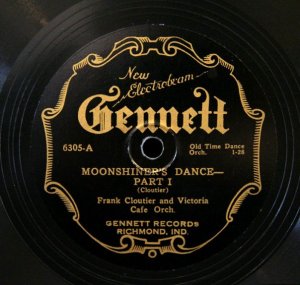
- When You And I Were Young Maggie Sidney Bechet (The Unique)
- Maggie De Danann All-Stars (The Star Spangled Molly)
- How dry I am Benny Bell (Judaica Sound Archives)
- How dry I am Artie Shaw (Greatest Big Band classics)
- Jenny Lind Lawrence Welk and His Champagne Music (Pick-A-Polka)
- Cartel à effets : Polka (Jenny Linds) Blyelle Horngacher (L’art de la musique mécanique, vol. 1)
- At The Cross Fiddlin John Carson (Fiddlin John Carson Vol. 6 1929 – 1930)
- At The Cross Turney Brothers (Times Ain’t Like They Used To Be: Early American Rural Music)
- At the Cross Hank Williams (Revealed)
- When You Wore A Tulip Cliff Carlisle (Classic Country Sides, Vol. 2)
- When You Wore A Tulip And I Wore A Big Red Rose American Quartet (Vintage Quartets)
- When You Wore a Tulip and I Wore a Big Red Rose George Lewis Ragtime Band, New Orleans Stompers (Walking With the King)
- When you wore a tulip Hoosier Hot SHots (Are you ready Hezzie)
The Moonshiner’s Dance Variations part 2
- Moonshiner’s Dance part 2 Frank Cloutier and the Victoria Cafe Orchestra (Gennett 78rpm record from Kurt Gegenhuber)
- Sobre Las Olas Bobby Capo (Bobby Capo’s Quizas, Quizas)
- Sobre las Olas Maestro Pedro Ruiz, Felipe Ruiz, Manuel Ruiz (L’Art du salterio mexicain)
- Over The Waves Stripling Brothers (The Stripling Brothers Vol. 1 1928 – 1934)
- Over the Waves Bob Crosby & His Orchestra (The Radio Years 1940)
- O Du Lieber Augustin The Bavarian Oompah Band (Café Bierkeller – Steins, Fräuleins, Football & Frankfurters)
- Oh Du Lieber Augustin Johnny And The Hurricanes (Greatest Hits)
- O, du lieber Augustin Will Glahe (The Accordion King With Orchestra And Chorus)
- Did You Ever See A Lassie The Tinseltown Players (Childrens Songs)
- O du Lieber Augustin Blyelle Horngacher (L’art de la musique mécanique, vol. 1)
- In The Shade Of The Old Apple Tree Henry Burr (Henry Burr Anthology / The Original King Of Pop)
- In The Shade Of The Old Apple Tree Louis Armstrong, The Mills Brothers (The 1930’s Recordings – Chronological Volume 4)
- In The Shade Of The Old Apple Tree Johnny Hodges (Complete Jazz Series 1950 – 1951)
- In the Shade of the Old Apple Tree Various Artists (Folkways Music of the Carousel)
- In the Shade of the Old Apple Tree Leon Redbone (Any Time)
- Over the Waves Clark Kessinger (Legend of Clark Kessinger)
- Over the Waves George Lewis (Burgundy Street Blues)




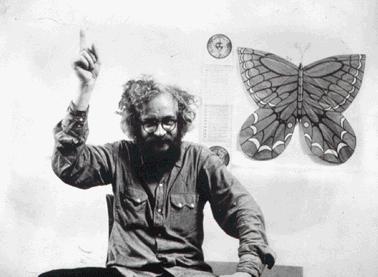







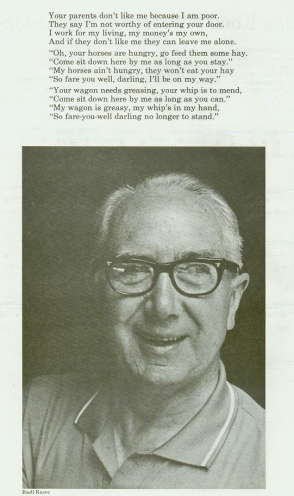
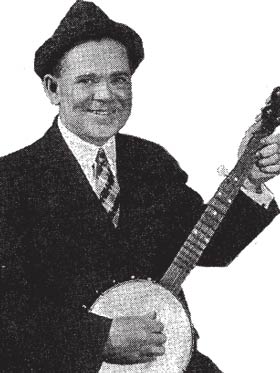
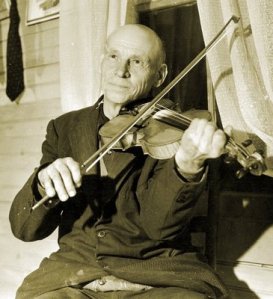


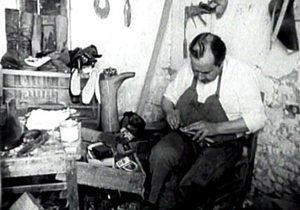
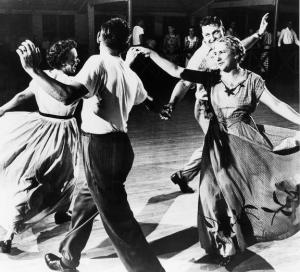
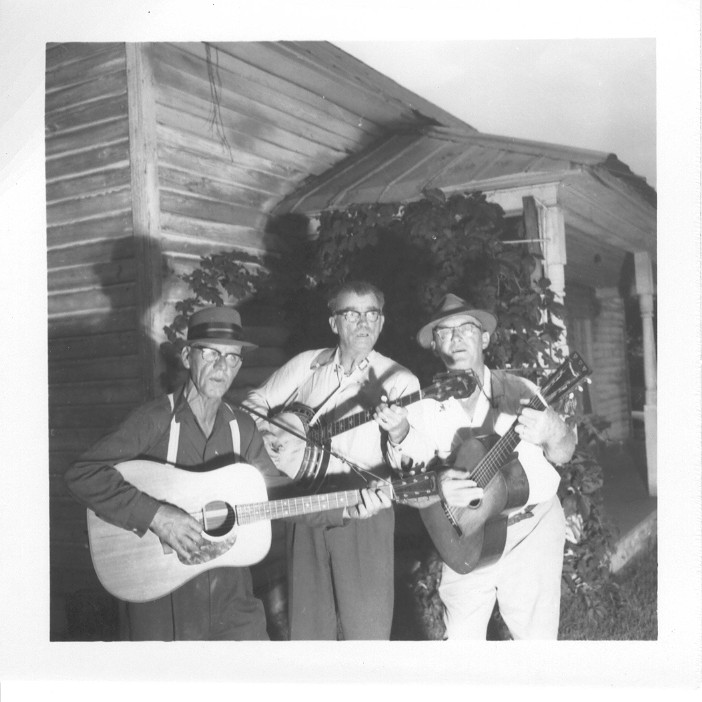



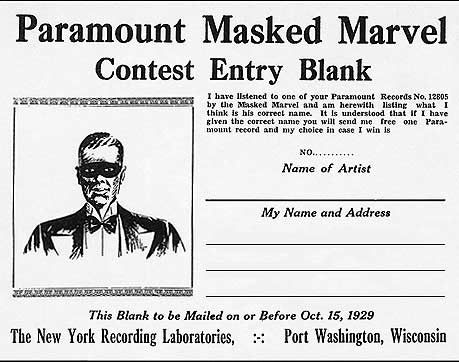

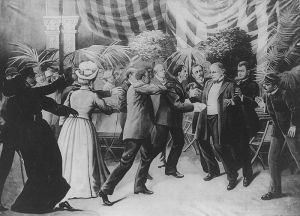





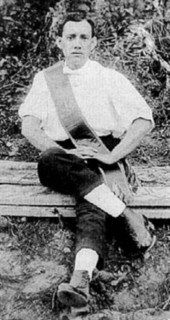
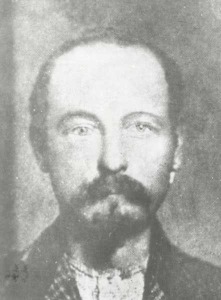
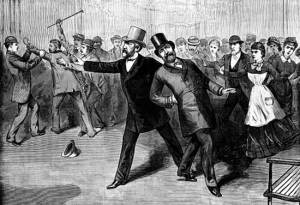
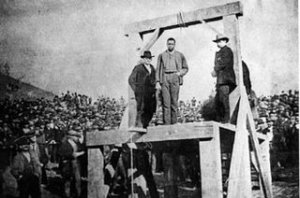
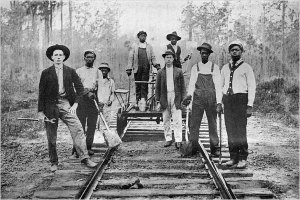

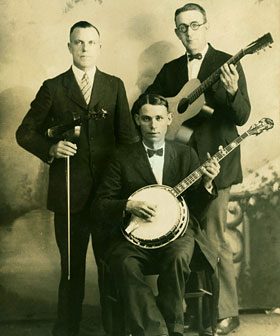





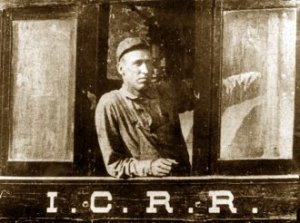





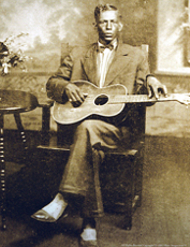
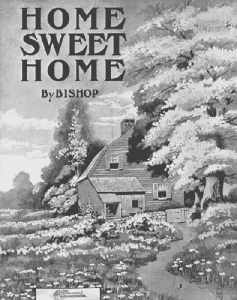



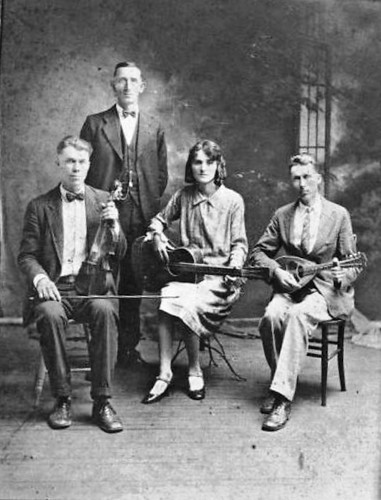















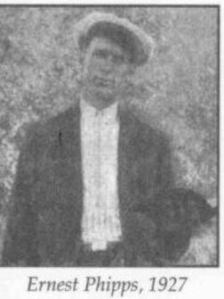






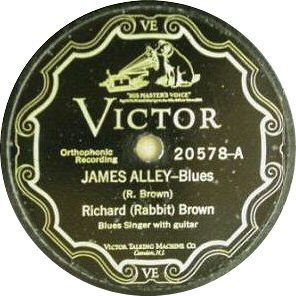
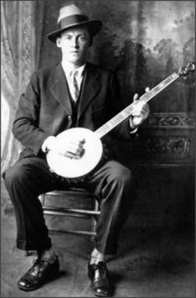


I really enjoyed the different versions of “When You and I Were Young, Maggie” – the De Danaan rendition is beautiful.
The contributions to our knowledge go on getting better and better and I think are certainly worth another ten dollars of any one’s money!
Not only a very interesting blog but written by a great talent too!!
Brilliant work. Thanks.
Since you brought up children’s songs and parodies, I thought I’d mention that “Over the Waves” is sometimes sung with these words: “George Washington Bridge, George Washington Washington Bridge…” Second verse: “Brooklyn Battery Tunnel…” . I saw this mentioned in Wikipedia but only vis-a-vis Sesame Street. There are other parodies of “In the Shade of the Old Apple Tree” as well. Anyway, thanks for another great post!
I wonder how conscious the musicians were in their construction of the original medley ……. it may have been a kind of polka-driven trawl through the backroads of America’s hybrid musical culture ….. but it has the effect of throwing the Anthology in the direction of a more popular kind of music than we are accustomed to find there. I personally always used to shudder when THIS tune came on to my rather warped old 33s back when I scraped together the funds to buy my first copy in the 70s (much richer, I dashed out and got the cd version as soon as it arrived!). NOW, I am amazed at how clever Harry must have been to throw this bizarre recording into the mix – serving as it does as a device to show how widespread are the influences of American popular music. Thanks again!!
Great post….excellent research
But there’s an interesting little variant of “When You and I Were Young,Maggie” which I couldn’t help but notice was missing.
“When I First Said I Loved Only You,Nora”,or “Nora” as it’s more commonly known,is a very popular song here in Ireland.It has a very interesting history,being featured heavily in Sean O Casey’s famous and controversial play “The Plough and The Stars”and then quickly being absorbed into the traditional music canon…personally my favourite performance of the song is by the late great Ronnie Drew :
Here’s a few more links which might be of interest:
http://en.wikipedia.org/wiki/The_Plough_and_the_Stars
http://www.mudcat.org/thread.cfm?threadid=10708 …a discussion about a Johnny McEvoy single where the B side is listed as “Nora(lyrics-O Casey.Music-trad)(From the Plough and the Stars)”.This highlights some of the confusion associated with the songs authorship in Ireland
I have just got around to checking out this page.
It is pretty good.
I am saving it.
I hope it survives.
I work a lot.
I wonder how you got all these items into one page?
This music and the commentary is just fabulous
I know. Who cares about the 30’s
Well, I am here, Am I not?
Thanks so much for making “Moonshiner’s Dance Part Two” available! This completes my project “The Anti Anthology”, which is based on volumes 1-3. Basically it consists of three playlists following the sequencing of the original anthology, but each track is the other side of the original 78 used for the Anthology track. Make sense? These tracks are “the road not taken” by HS when he sequenced volumes 1-3. Like a photographic negative, in a sense. I think it makes very interesting listening…
So…
This is probably the best blog post I’ve ever seen. Anywhere. You’re doing incredible work, Gadaya. Thank you thank you thank you.
[…] little is known of him except that he played around Minnesota. Thanks to the insanely detailed blog The Old Weird America, we also know that “The Moonshiner’s Dance” (filled with laughter and more […]